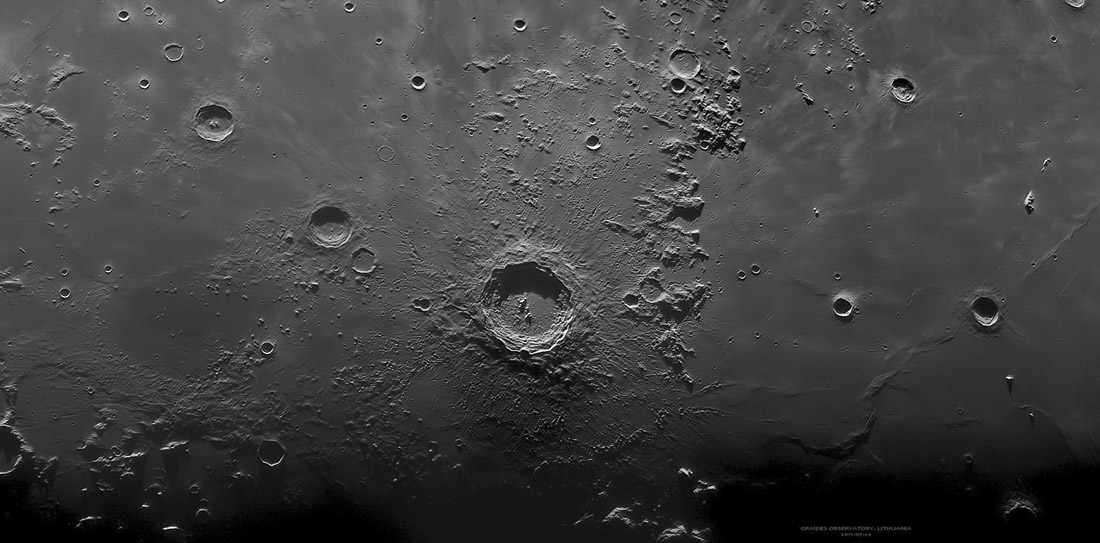August 10, 2011
First Lithuanian Moon
image by Gintas Rudzevicius, Graides Observatory, Lithuania.
Looking at the Moon in different ways brings out different things. We normally see images
of the Copernicus area with either the north or the south up. But the first thing I noticed in
looking at Gintas' west up view is the band of hills that cuts across from top to bottom,
with maria to the right and left. Yes, I knew that Mare Imbrium is north of the majestic
Copernicus, and various mare bits are to the south, but what this image emphasises is
that band of hills. It is made up of two parts. Immediately surrounding Copernicus are the
blocks of ejecta thrown out of that crater about a billion years ago. But the broader band
of mountains and hills starts at the Carpathian Mountains, the rim of the Imbrium Basin,
and progressively is made up of smaller and more scattered hills to the south. That is a
wonderful cross section of the thinning of an ejecta blanket. To the south the ejected debris
is so small that most of it other than scattered pockets was covered by later lavas.
Chuck Wood
Technical Details
2011.07.24. UT04:30. SW Newton 12', Mount home made GROM1400(SiTech), TVPowerMate 2.5, DMK 41,IR742, Registax6.
Related Links
Rükl plate 31
COMMENTS?
Click on this icon File:PostIcon.jpg at the upper right to post a comment.




